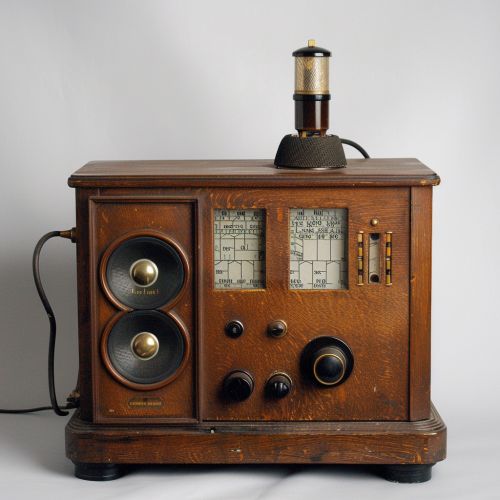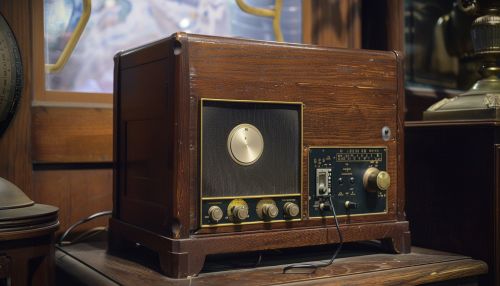History of Broadcasting
Early Developments in Broadcasting
The history of broadcasting traces its origins to the late 19th and early 20th centuries, with the development of wireless telegraphy and radio technology. The initial breakthroughs in wireless communication were made by scientists such as Heinrich Hertz, who demonstrated the existence of electromagnetic waves, and Guglielmo Marconi, who is credited with the first successful transatlantic radio transmission in 1901. These early experiments laid the groundwork for the future of broadcasting.
The first regular radio broadcasts began in the early 1920s. In the United States, KDKA in Pittsburgh is often cited as the first commercial radio station, having started regular broadcasts on November 2, 1920. In the United Kingdom, the British Broadcasting Company (later Corporation, BBC) began its first regular radio service in 1922. These early broadcasts primarily consisted of news, music, and entertainment programs.
The Golden Age of Radio
The 1930s and 1940s are often referred to as the "Golden Age of Radio." During this period, radio became a dominant medium for entertainment and information. Families would gather around their radio sets to listen to a variety of programs, including dramas, comedies, news broadcasts, and live music performances. Popular shows of the era included "The Shadow," "The Jack Benny Program," and "The War of the Worlds" broadcast by Orson Welles.
Radio also played a crucial role during World War II, providing news and propaganda to boost morale and inform the public. The BBC's broadcasts, including the famous speeches by Winston Churchill, were instrumental in keeping the British public informed and motivated during the war.
The Advent of Television
The development of television technology began in the early 20th century, with pioneers such as John Logie Baird and Philo Farnsworth making significant contributions. Baird demonstrated the first working television system in 1926, and Farnsworth developed the first fully electronic television system in 1927.
Television broadcasting began to take off in the late 1940s and early 1950s. In the United States, the National Broadcasting Company (NBC) and the Columbia Broadcasting System (CBS) were among the first to launch regular television services. The BBC began its television service in 1936, but it was suspended during World War II and resumed in 1946.
The 1950s and 1960s saw rapid growth in television ownership and viewership. Television became the primary medium for entertainment and news, with popular shows such as "I Love Lucy," "The Ed Sullivan Show," and "The Twilight Zone." The introduction of color television in the 1960s further enhanced the viewing experience.
The Rise of Cable and Satellite Television
The 1970s and 1980s witnessed the rise of cable television and satellite broadcasting. Cable television, which began as a way to provide better reception in rural areas, quickly expanded to offer a wide range of channels and specialized programming. The launch of Home Box Office (HBO) in 1972 marked the beginning of premium cable services, offering movies and original programming without commercial interruptions.
Satellite television also emerged as a significant force in broadcasting. The launch of communication satellites such as Telstar and Intelsat enabled the transmission of television signals over long distances, making it possible to broadcast live events globally. The introduction of direct broadcast satellite (DBS) services in the 1990s, such as DirecTV and Dish Network, provided consumers with more choices and higher-quality signals.
The Digital Revolution
The transition from analog to digital broadcasting began in the late 20th century and has had a profound impact on the industry. Digital broadcasting offers several advantages over analog, including improved picture and sound quality, more efficient use of the spectrum, and the ability to provide additional services such as high-definition television (HDTV) and interactive features.
The switch to digital broadcasting was mandated by governments in many countries, with the United States completing the transition in 2009 and the United Kingdom in 2012. Digital broadcasting has also facilitated the growth of streaming media services, allowing viewers to access content on-demand over the internet.
The Internet and Streaming Era
The advent of the internet has revolutionized broadcasting, leading to the rise of streaming media services and the decline of traditional broadcast television. Companies such as Netflix, Amazon Prime Video, and Hulu have become major players in the industry, offering a vast library of content that can be accessed on-demand.
Streaming services have also enabled the rise of cord-cutting, where consumers cancel their traditional cable or satellite subscriptions in favor of internet-based alternatives. This shift has forced traditional broadcasters to adapt by launching their own streaming platforms, such as Disney+, HBO Max, and Peacock.
The internet has also given rise to new forms of broadcasting, such as podcasting and live streaming. Platforms like YouTube, Twitch, and Spotify have become popular destinations for content creators and consumers alike, offering a wide range of audio and video programming.
The Future of Broadcasting
The future of broadcasting is likely to be shaped by ongoing technological advancements and changing consumer preferences. The rollout of 5G networks promises to enhance the delivery of high-quality video content and enable new forms of interactive and immersive experiences, such as virtual reality (VR) and augmented reality (AR).
Artificial intelligence (AI) and machine learning are also expected to play a significant role in the future of broadcasting. These technologies can be used to personalize content recommendations, improve production workflows, and enhance the viewer experience.
Despite the challenges posed by the rise of streaming services, traditional broadcasting is likely to remain relevant for the foreseeable future. Live events, such as sports and news, continue to draw large audiences, and broadcasters are finding new ways to integrate digital and interactive elements into their programming.
See Also
- Wireless telegraphy
- Guglielmo Marconi
- British Broadcasting Company
- Golden Age of Radio
- John Logie Baird
- Philo Farnsworth
- National Broadcasting Company
- Cable television
- Home Box Office
- Telstar
- High-definition television
- Streaming media
- Cord-cutting
- Podcasting
- 5G
- Virtual reality
- Artificial intelligence


